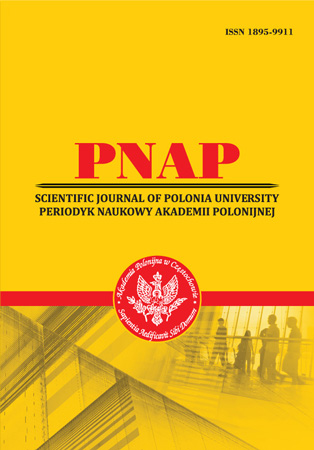A MODEL OF ORGANIZATIONAL CULTURE OF HIGHER EDUCATION INSTITUTIONS ON THE EXAMPLE OF UNIVERSITIES OF THE SZECHUAN PROVINCE OF THE PEOPLE’S REPUBLIC OF CHINA
Abstract
In the article, the author described the model of organizational culture development. Using the example of the Southwest University of Finance and Economics, Chengdu, the author identified the elements of the organizational culture model. The basis for the development of organizational culture is the interdependence of factors, principles, and trends in the work of a higher education institution. The first level involves the development of a system of organizational culture management goals at the university in a real cultural space. Based on these goals, a unique strategy is formed. The second level of organizational culture development involves the integration of the content and technologies of its implementation at the internal university level, as well as at the level of inter-university interaction. The third level involves the structuring of managerial aspects of organizational culture, various methods of monitoring and current evaluation of organizational culture of the university. The article emphasizes that universities in Sichuan province are open to innovation and international cooperation. But the universities of this province have strong traditions and a classical hierarchy in management. For the organic combination of traditions and innovations in the management of organizational culture, the goals are to improve the quality of management subjects and obtain economic, social, scientific and technical, ecological and other effects. The combination of traditions and innovations in the development of the organizational culture of universities in Sichuan province involves successive elements of the content of management: initiation, marketing, release, implementation, monitoring, evaluation of effectiveness, diffusion of an integrated idea. The success of the organizational culture model of universities depends on the coordination and coordinated productive cooperation of all participants in the educational process, structures that are interested in the quality of education. Therefore, the author emphasized: the board should combine traditions and innovations; the university functions as self-sufficient, provides appropriate training of managers, coordinators and teachers; creation of conditions for self-realization of the individual, socially significant productive creative activity; favorable microclimate and support for young scientists.
References
2. CHENGDU University (2023). URL: https://news.cdu.edu.cn/ [English]
3. Druker P. (1994). Yak zabezpechyty uspikh u biznesi: novatorstvo i pidpryiemnytstvo [How to ensure success in business: innovation and entrepreneurship; per. z anhl. Kyiv, Ukraina. 319 s. [in Ukrainian]
4. Fayol, A. Emerson, G. Teylor, F. and Ford, G. (1992), Ypravlenie eto nayka i iskystvo [Management – is the science and art], Respyblika, Moscow. [in Russian].
5. Kotler F. (2001). On Marketing, Simon & Schuster. 272 p. [English]
6. Kravchenko H. Yu. (2017). Upravlinnia rozvytkom liudskoho potentsialu pedahohichnoho kolektyvu osvitnoho zakladu na osnovi adaptyvnoho upravlinnia rozvytkom. [Management of the development of human potential of the teaching staff of an educational institution based on adaptive management of development]. Imidzh pedahoha: elektronnyi fakhovyi zhurnal, № 7 (176). URL: http://isp.poippo.pl.ua/issue/view/7127 [in Ukrainian]
7. Mary A Coulter, Mary Coulter, David A DeCenzo, Stephen P Robbins (2017). Fundamentals of management. Published by Pearson. P. 233-235. [English]
8. Porter, M. (1998). Competitive Strategy: Techniques for Analyzing Industries and Competitors Hardcover – Illustrated, Free Press; Illustrated edition (June 1). 397 p. [English]
9. Riabova Z. V. (2013). Naukovi osnovy marketynhovoho upravlinnia navchalnym zakladom [Scientific foundations of marketing management of an educational institution]: monohrafiia. Kyiv, 2013. 377 s. [in Ukrainian]
10. Southwestern University of Finance and Economics (SWUFE). (2023). URL: http://e.swufe.edu.cn [English]
11. Yevtushevskyi V.A. (2007). Stratehiia korporatyvnoho upravlinnia. [Corporate management strategy]. Monohrafiia. Kyiv: Znannia. 287 s. [in Ukrainian]
Abstract views: 336 PDF Downloads: 246







